Every year, Diamond Light Source, a synchrotron in the British county of Oxfordshire, hosts around 3,000 scientists researching highly complex projects (see box) in areas like medicine, archaeology, mechanical engineering, biology or chemistry. They all use light emitted by the electrons that are sped around the research facility’s massive storage ring at nearly the speed of light. “Cutting-edge research happens here every day, so it is important for us to always keep the technology up to date as well,” says Lee Walters, Maintenance Manager at Diamond Light Source. “Efficiency is an important factor here.” So he was all ears when Phil Taylor, Global Strategic Accounts Manager at air-conditioning specialists Stulz, suggested upgrading the existing cooling units for the sensitive electronics to achieve a significant energy saving.
This is how the synchrotron works
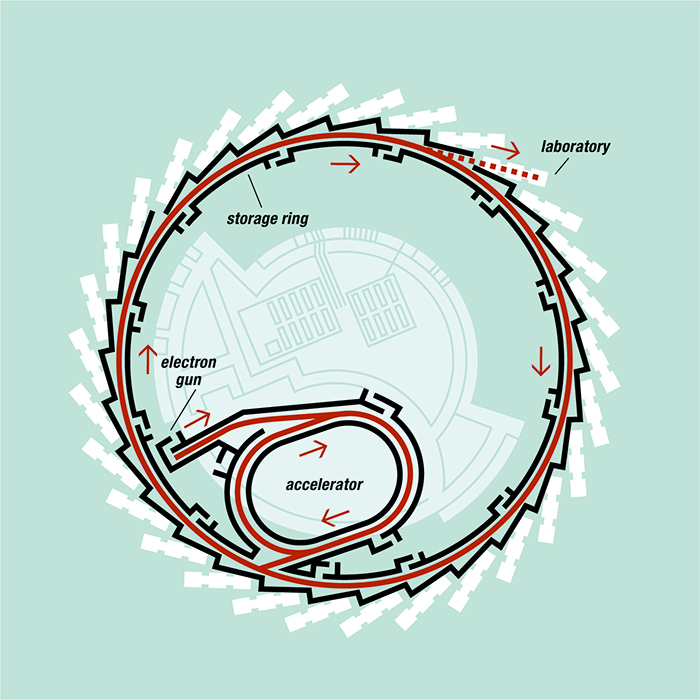 Diamond Light Source is a particle accelerator based in Oxfordshire, England. The synchrotron accelerates electrons to speeds approaching the speed of light, creating extremely bright light beams that can be up to 10 billion times brighter than sunlight. Researchers use this like an extremely fine microscope. To generate the light, an electron gun first fires electrons out into an accelerator, where the particles are heavily accelerated. As soon as they reach the required speed, the electrons are shot out into the 560 metre storage ring. As the light hurtles through the ring, magnets agitate the beam, further increasing the brightness of the light. A range of laboratories connected to the ring divert the light from the storage ring to use it for various experiments. Over 500 staff, together with 3,000 visiting scientists every year, conduct research into areas such as medicine, nanotechnology, archaeology, engineering and environmental science.
Diamond Light Source is a particle accelerator based in Oxfordshire, England. The synchrotron accelerates electrons to speeds approaching the speed of light, creating extremely bright light beams that can be up to 10 billion times brighter than sunlight. Researchers use this like an extremely fine microscope. To generate the light, an electron gun first fires electrons out into an accelerator, where the particles are heavily accelerated. As soon as they reach the required speed, the electrons are shot out into the 560 metre storage ring. As the light hurtles through the ring, magnets agitate the beam, further increasing the brightness of the light. A range of laboratories connected to the ring divert the light from the storage ring to use it for various experiments. Over 500 staff, together with 3,000 visiting scientists every year, conduct research into areas such as medicine, nanotechnology, archaeology, engineering and environmental science.
Great potential
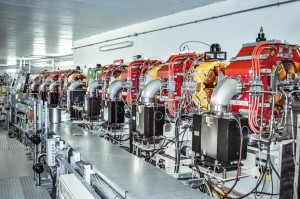
The light beam is directed through the particle accelerator by magnets. The electronics controlling these magnets are cooled by CRAC units using EC fans from ebm-papst
The pair met with James Cooper, Product Manager at ebm-papst UK, at the high-tech research facility to pin down how much potential existed. They examined 27 CRAC (computer room air-conditioning) units installed by Stulz. Instead of a server room, they cool the electronics used to control the magnets that convey the light beam through the storage ring. The units were previously all fitted with belt-driven AC fans. Together with his partners, James Cooper came to the conclusion that switching to RadiCal® EC fans would be worthwhile. “We estimated potential for savings of around 39 percent,” says Cooper, “to fully convince the customer, however, we were initially commissioned to upgrade a single CRAC unit in a test run.” This task was carried out by ebm-papst together with the installer Cinque Energy Solutions.
Tailored installation
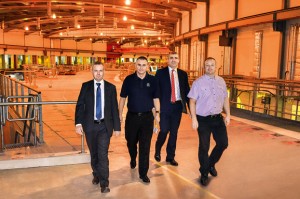
Success against the clock: James Cooper from ebm-papst, David Japp from Cinque Energy Solutions, Phil Taylor from Stulz and Lee Walters from Diamond Light Source
The main challenge here was the small installation space in the CRAC units. “These sit on a solid concrete base, so it was impossible to assemble the EC fans in the base as usual,” explains Phil Taylor. Working together with the installer, ebm-papst developed a special metal frame that allowed the fans to be installed in the units, despite the tight area. In addition, the housing positions the fans at the right angle to ensure the best air flow through the cooling unit. ebm-papst UK manufactured the special housing at its own production facility to allow the customised solution to be implemented quickly.
Green light for upgrade
The test run began as soon as the technicians from the installer completed the upgrade of the first unit, with positive results. The energy saving exceeded estimates by almost five percent. One of the most important things for the operators of Diamond Light Source here was keeping the temperature constant in the technical space to be cooled. In order to ensure this, the EC fans are fitted with a 0-10 V controller that is easy to operate. This allows all units to be adjusted individually to the requirements of the spaces. The test run also revealed further potential for improvements: “We were able to further optimise the air flow by enlarging the hole in the housing beneath the fans,” recalls Cooper. The test run and the extra efficiency improvements were enough to convince the decision-makers at Diamond Light Source to give the green light.
A race against time
The upgrade team were now faced with a daunting schedule. The fans could only be replaced during the synchrotron’s brief off-line period, giving the team from the installer just 14 days to retrofit the remaining 26 cooling units. The technicians therefore worked in two teams of three on the upgrade. To minimise delays, ebm-papst delivered all 54 EC fans directly to the CRAC units. The first task was to remove the old belt-driven AC motors. The installers then open-up the base plate using a special cutting tool to improve the air flow, before fitting the individually adapted RadiCal® centrifugal fans from ebm-papst. After restoring all the connections and adjusting the manual speed controller, the system upgrade was complete. Working along this procedure, the technicians went from one unit to the next so that all CRAC units were fully functional when the system was started again.
One of our staff now always gives the system a hug to check if it is actually running. Previously that was obvious, due to the heavy vibrations and the noise.
Lee Walters, Diamond Light Source
Using the RadiCal® fans, Diamond Light Source now saves 55 percent of the energy used in daily operation compared to the old AC fans. This represents an annual CO2 reduction of 46 tonnes. Operating costs are also reduced, with Diamond Light Source spending 40,000 euros less per year thanks to the upgrade. “These are some impressive results. Another positive is that the upgrade work did not affect the operation at all,” says Lee Walters. Aside from the high energy saving, Diamond Light Source also benefits from significantly reduced vibration and noise following the upgrade. This is an important improvement, especially given the sensitive high-tech equipment. Walters: “One of our staff now always gives the system a hug to check if it is actually running. Previously that was obvious, due to the heavy vibrations and the noise.”
RadiCal®
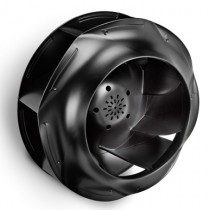 The RadiCal® centrifugal fans with backward-curved blades stand out by halving the noise level and significantly reducing the energy requirement. These improvements are made possible by an aerodynamically optimised impeller made from fibreglass-reinforced plastic. The motors in RadiCal® low-pressure centrifugal fans have been miniaturised and are much more compact than their predecessors. With the current dimensions, easy and trouble-free replacement of existing AC solutions is possible at any time.
The RadiCal® centrifugal fans with backward-curved blades stand out by halving the noise level and significantly reducing the energy requirement. These improvements are made possible by an aerodynamically optimised impeller made from fibreglass-reinforced plastic. The motors in RadiCal® low-pressure centrifugal fans have been miniaturised and are much more compact than their predecessors. With the current dimensions, easy and trouble-free replacement of existing AC solutions is possible at any time.
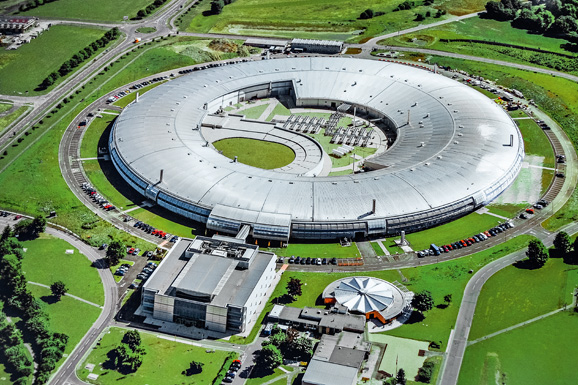
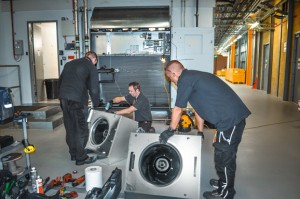
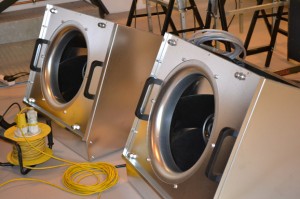
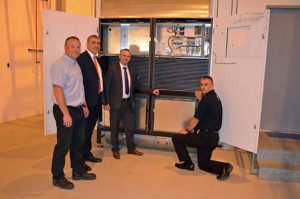
Leave a comment